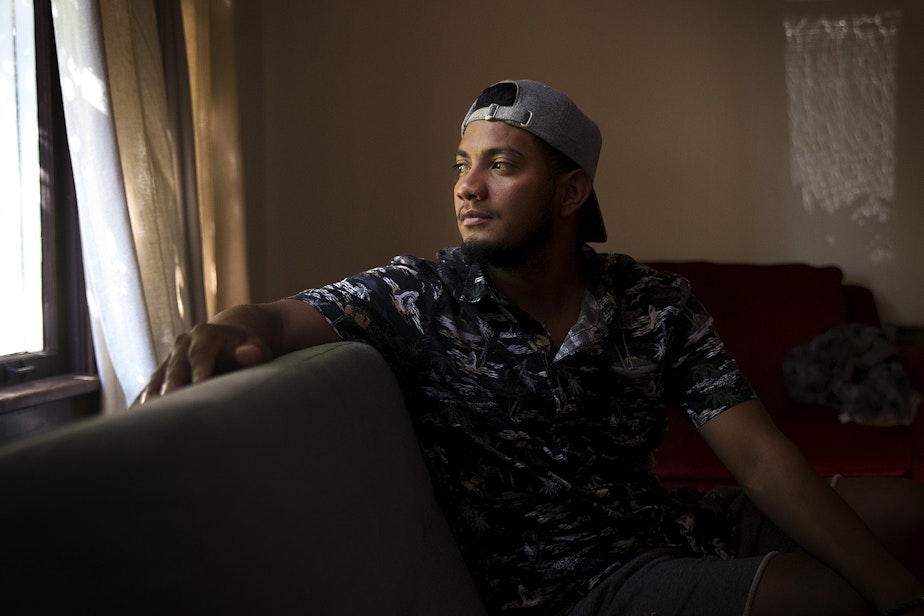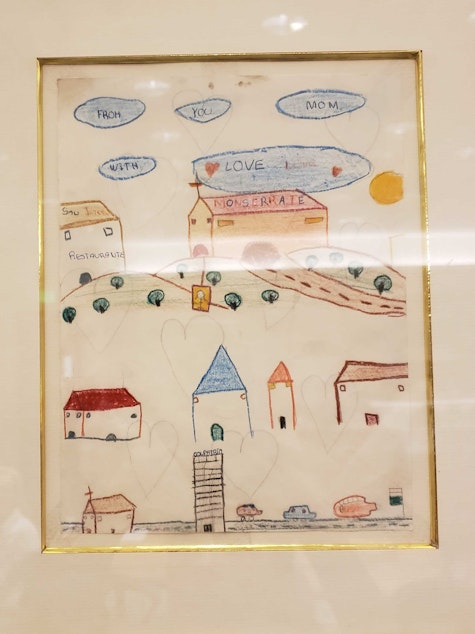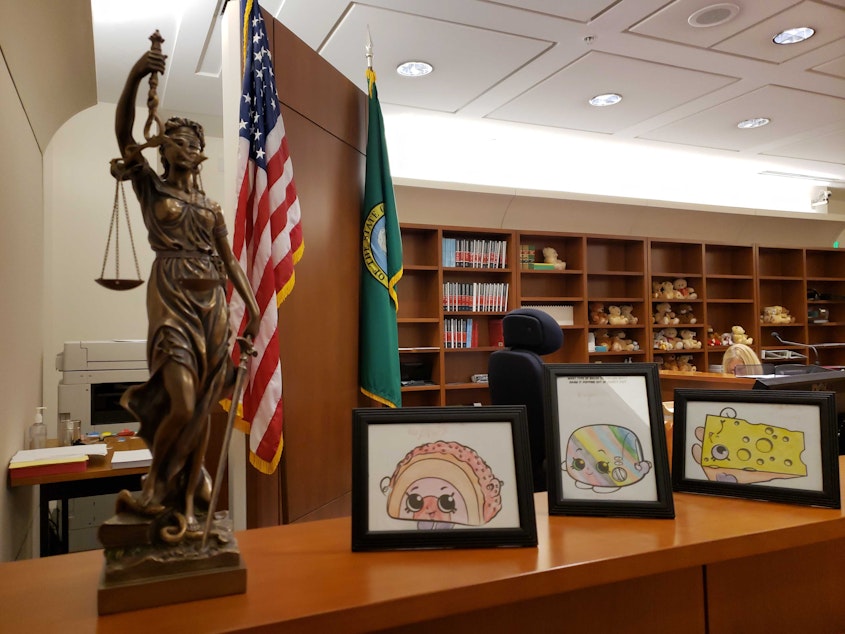Teddy bears and hope: A Seattle court for kids who cross the border alone

Past tall, glass windows, down a hallway, is a small courtroom lined with rows of stuffed animals. This is where kids apprehended at the border sometimes end up.
I
nside the court, it’s quiet except for the awkward squeak of office chairs. A teenage girl squirms in her seat. In English, Judge Mafé Rajul asks how her summer is going.
A court interpreter repeats the question in Spanish.
The girl is shy. She wears yoga pants and a white hoodie, her hair tied back with a pink rubberband.
“Bien,” she says softly. Good.
Sponsored
Judge Rajul asks her if she wants to take a teddy bear from the far wall.
The girl smiles.
“Okay,” she says.
She goes up, chooses a plush bear from the middle of the bunch, and sits back down.
Those teddy bears are the first thing you notice when you walk into this courtroom in South King County. They seem out of place here — a stark contrast to the fluorescent court lights and the upright American flag at the front of the room.
Sponsored
This courtroom is where unaccompanied youth apprehended at the border sometimes end up.
It happens in special cases and the legal road is long and complicated. Youth must be under 21, single, and show that they were either abused, neglected, or abandoned by one or both parents, to qualify for something called SIJS: Special Immigrant Juvenile Status.
They can then petition the court to be placed with a relative, a cousin or aunt living in the U.S., for example. If the youth has no local connections, they can petition to be in the care of an agency, like Friends of Youth, that contracts with the state and federal government.
It’s a tricky process, but this allows them the opportunity to get on track to become a permanent resident.

Sponsored
G
ustavo Portillo came from Honduras when he was 13.
He remembers vaguely his first day in court in this exact room before but can’t recall the specifics.
“I didn't speak English back then,” he says.
Sponsored
Portillo and his cousin left Honduras because of the poverty in his hometown. Their family was poor.
He says they saved up money, crossed Guatemala and caught the train in Mexico. The two boys saw a lot of hungry people on their travel north. They saw fights erupt, and even got split up.
Once they reached the U.S.-Mexico border, Portillo never saw his cousin again. He waited for him for three days before finally deciding to cross in a group.
In the Arizona desert, he ran out of water and was eventually picked up by border patrol agents. Portillo, as an unaccompanied youth, was placed with the Office of Refugee Resettlement.
He remembers being shuffled into different shelters — six months here, a year and a half in another place. Eventually he was transferred from Arizona to the Northwest.
Sponsored
“And they were like ‘Okay you're leaving, you're going to Seattle now,’" he recalled border officials saying. "I’m like, where is that?” he says laughing.
He was placed at Friends of Youth and, at age 18, found a foster family. Now he’s 22, finishing his last semester at Green River College.

I
n the last six years, 2,708 migrant children were sent to Washington state, according to data from the Office of Refugee Resettlement.
King County is home to most of those kids. Some will get into the legal pipeline — one that has quickly expanded to with the uptick in children crossing the border alone.
This year the number of cases involving youth with SIJS in King County is already at 72. Just a few years ago, judges typically saw fewer than 20 cases in a whole year.
Meghan Casey, who works with the Northwest Immigrant Rights Project, says they have seen cases take two years to adjudicate.
“This really is the first step in a long road that a lot of these children face with the immigration process,” she says.
Casey notes that migrant youth aren’t automatically granted attorneys. It’s up to private lawyers or nonprofit organizations to connect the youth to legal representation, and most of it is pro bono work.
Judge Rajul, who offers teddy bears, says that while the history of each of these children is harrowing, she tries to find a way to connect with them when they’re in her courtroom.
An immigrant from Colombia herself, Rajul reckons with the fact that her decisions impact migrant children and their path towards a legal, permanent status.
“I always want to have them walk away with a positive experience,” she says. “So I always offer them a teddy bear or ask them about their school, what they like... just a way to make them feel not as scared.”




